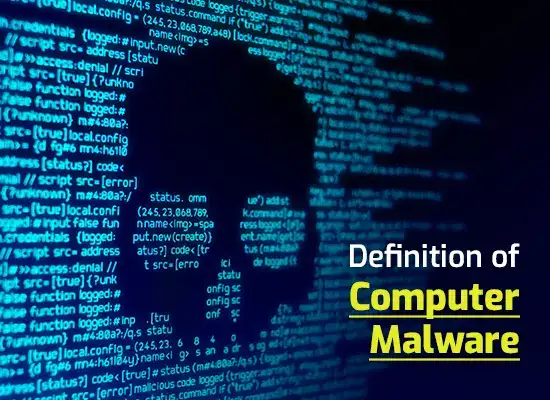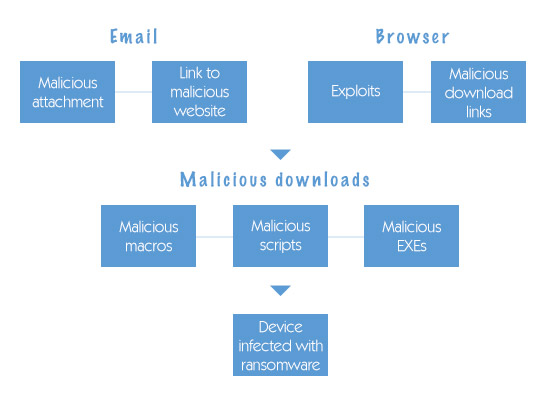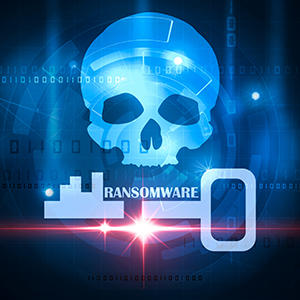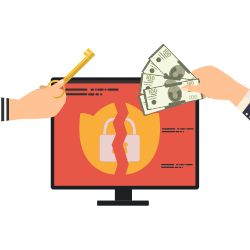How to Remove Ransomware from your Computer?
Updated on October 21, 2022, by Xcitium

How to Remove Ransomware
Ransomware is a type of malware that cyberthieves use to encrypt all data on a victim’s computer and demand for payment to retrieve the encrypted content. In implementing a ransomware encryption attack, attackers use military grade encryption algorithm which can only be unlocked with a unique passkey.
In the first quarter of 2018, roughly 180,000 users worldwide were affected by ransomware attacks. This implies that proper understanding on how to remove ransomware encryption and ample protection from any type of cyber attack are imperative knowledge to have in this digital age.
Earliest variants of ransomware first surface in the late 1980s. In the early years of ransomware attacks, cybercriminals ask their victims to send them the ransom payment via snail mail. But now, with improved technology and payment methods, ransomware creators demand victims to send ransom payments through cryptocurrency exchanges, which unfortunately neither security nor government agencies can detect.
Due to their lack of awareness about proper cyber security knowledge, ransomware creators initially target attacks and extort money from household users (a.k.a. individual systems). But soon enough, ransomware creators realized how far more profitable it would be if they could rolled out a successful ransomware attack to a business enterprise. This is a probable key driving force why 35% of SMEs (small and medium-sized enterprises) had reportedly experienced at least one ransomware attack in 2017.
Cyberthieves can infect your computer with ransomware encryption through an array of well-formulated attack schemes. Malicious spam is one of these ransomware attack schemes and the most typically used by attackers. Malicious spams work by sending potential victims unsolicited emails that contain infected links or file attachments (Word file, PDF) that will download the ransomware to the defenseless victim’s computer.
Ransomware attacks occur more frequently on western markets. The UK, US and Canada are the top three countries ransomware creators target the most. Emerging markets in Asia and South America are also predicted to experience significant increase in ransomware encryption attacks. But even though you don’t reside in these areas, you are still not safe. As long as you have important data on your computer that you can’t afford to lose, you must stay vigilant and get yourself proper skills and knowledge on how to remove ransomware on your computer properly.
If you are to encounter a ransomware attack, then you must know how to address it and remove ransomware properly. Always remember to not panic and remain as calm as you can be. This way you will be able to think decently and address the attack more wisely. Take note of every information you can get and log all files that are being flagged as infected by your OS or security software.
Also, disconnect the infected computer from the internet. There is a possibility the ransomware that infected your computer is still actively sending data to your attackers. If you need to do research about ransomware, it would be more clever to do it using another device.
Ransomware attacks bring trouble. So if your computer get infected, don’t think twice and learn how to remove ransomware from your computer accordingly so you will be able to cure it immediately.
If you still have access to your computer, then it will be an easier method. Using a different device (remember to keep the ransomware-infected computer disconnected from the network), look and download a reputable software program that has the capacity to disable and delete ransomware attacks from your computer. Install it on the infected computer and run a full scan. The scan will display the detected infections your computer has, select them all and delete it permanently from your computer.
But if your computer is unfortunately already locked by the ransomware attack, it will be then a longer process. What you can do is restart the computer and use it in Safe Mode. This will not affect your files at all, but it can return system files and programs to the state they were in whichever date you will select. To do this, you must carefully follow these steps:
- Restart your computer.
- Press the F8 key while your computer is booting up.
- Use the arrow keys to select the Safe Mode option on the screen.
- Type rstrui.exe using the text cursor that appears on the screen
- Press Enter.
This will direct you to a Windows System Restore screen that displays all save points within your Windows system before the attack was established. Just choose a date and restore your computer to this point. After this, proceed with the aforementioned method used when your computer is still accessible.
If you have a backup file, perhaps in the cloud (Google Drive, Dropbox) or in a portable HDD, then you can just easily copy the backed data on your computer and don’t need to worry about the ransomware encryption attack anymore.
Always remember, do not easily resort to paying the ransom. There is no assurance that these cyber criminals will give you the necessary passkey for unlocking the encrypted files once you pay them. Also, by easily giving in to their demands, you are just further making it as a profitable scheme that can encourage them to launch more ransomware attacks to either you or someone else.
There are free decryptor tools available now online. Even these software cannot promise you to retrieve all your encrypted data, there is still a chance that they can unlock some of the files that were encrypted by the ransomware attack. Always be assertive about the proper understanding on how to remove ransomware to not get yourself into a big trouble once an attacker found a hole in your security system.
Xcitium Antivirus Resources
Best Way To Protect Against Ransomware




